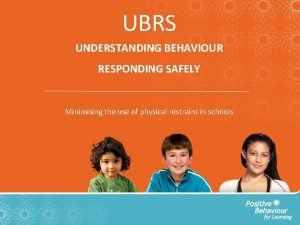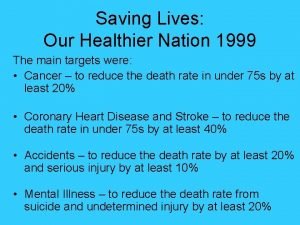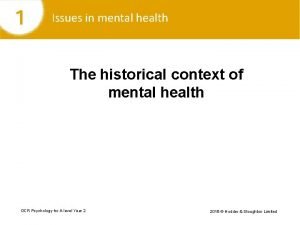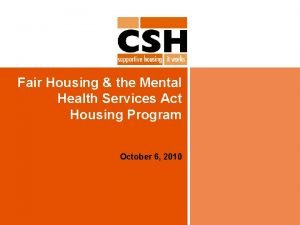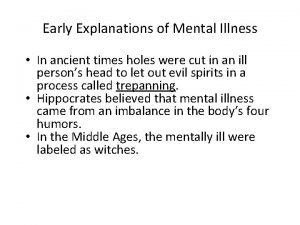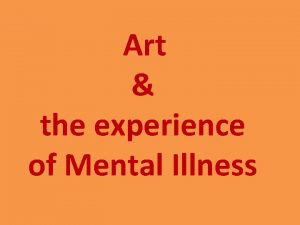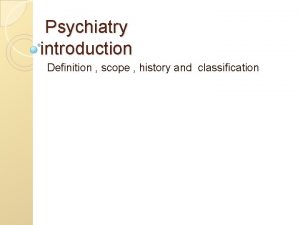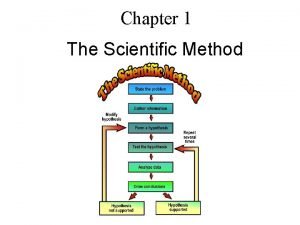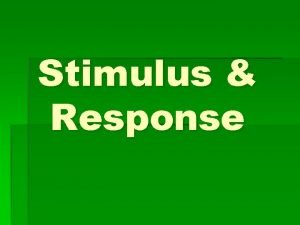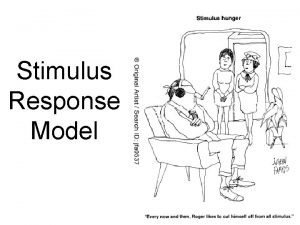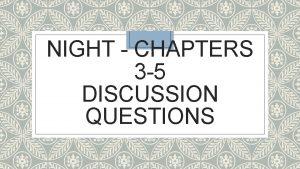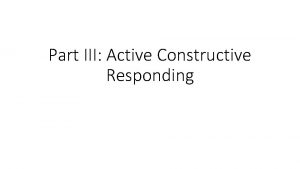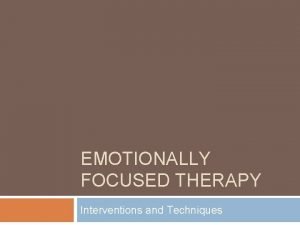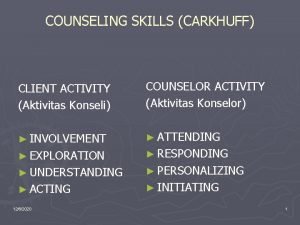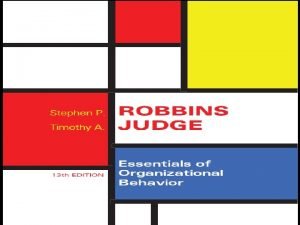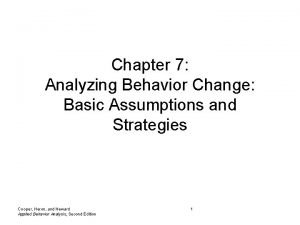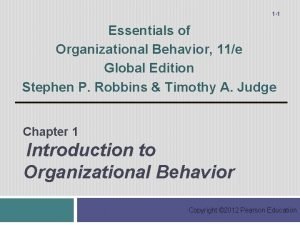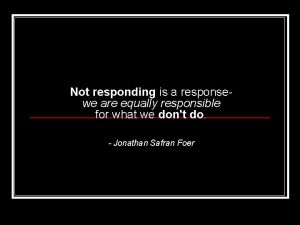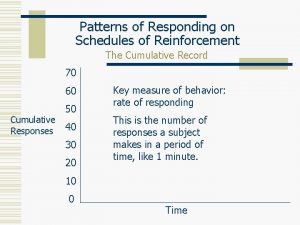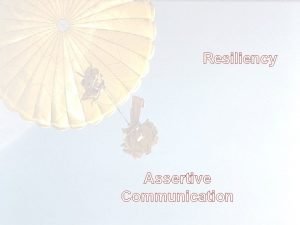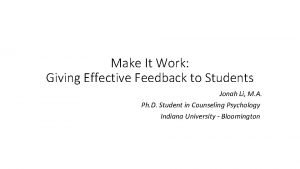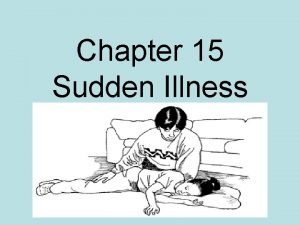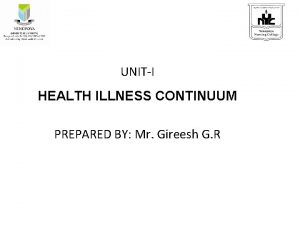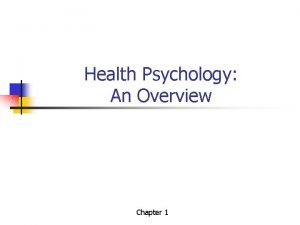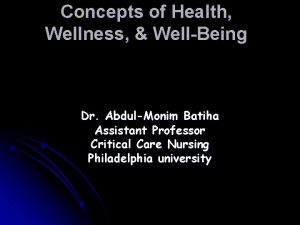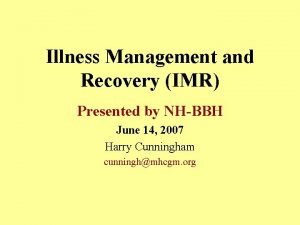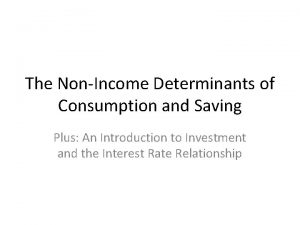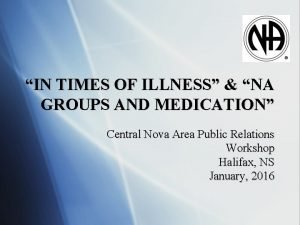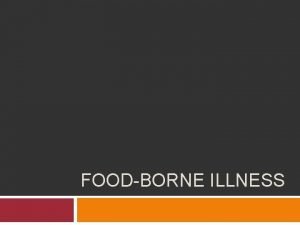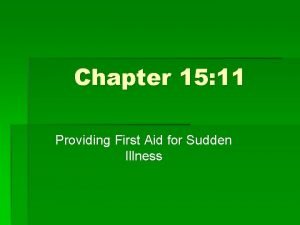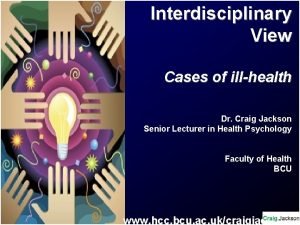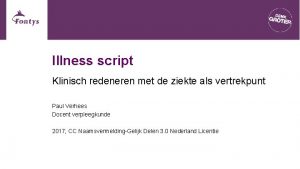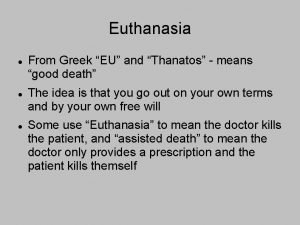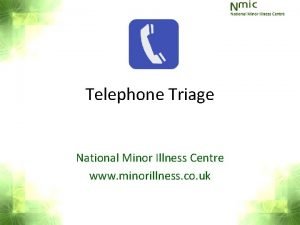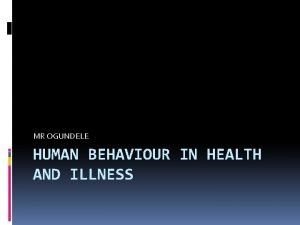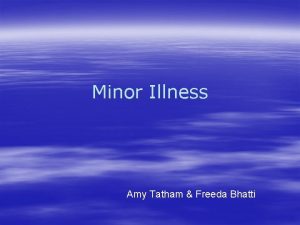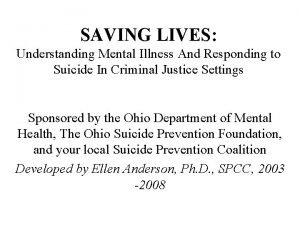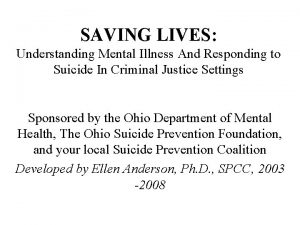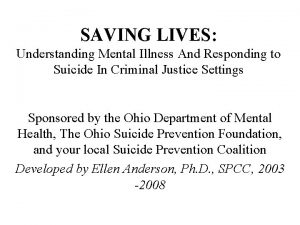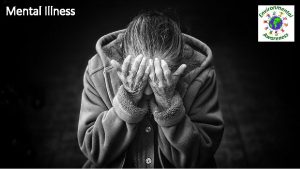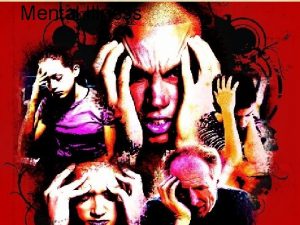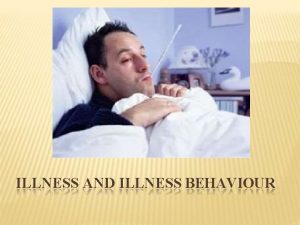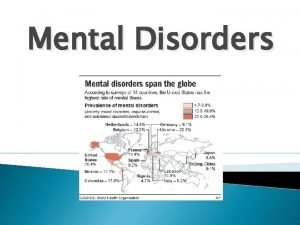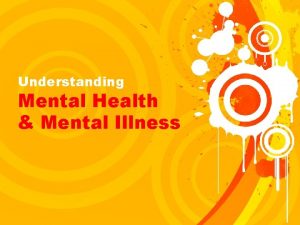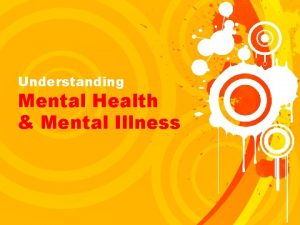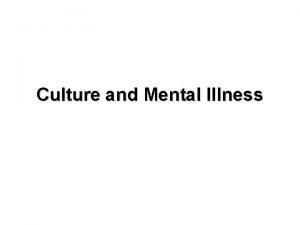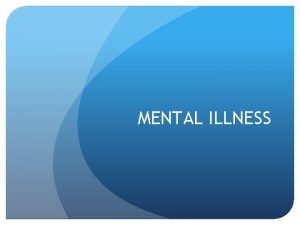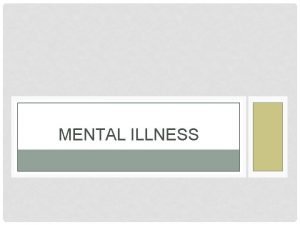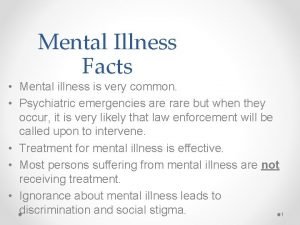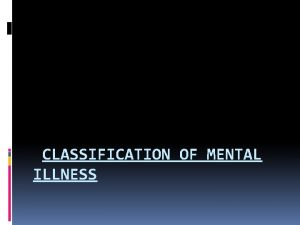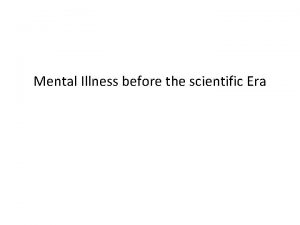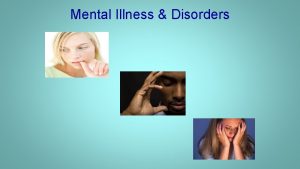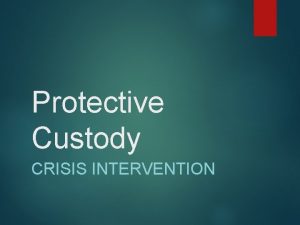SAVING LIVES Understanding Mental Illness And Responding to
























































































- Slides: 88

SAVING LIVES: Understanding Mental Illness And Responding to Suicide In Criminal Justice Settings Sponsored by the Ohio Department of Mental Health in Partnership with the ADAMH Board of Franklin County and the Ohio Suicide Prevention Team Developed by Ellen Anderson, Ph. D. , LPCC, 2003 -2005 Criminal Justice Gatekeeper Training

“Still the effort seems unhurried. Every 17 minutes in America, someone commits suicide. Where is the public concern and outrage? ” Kay Redfield Jamison Author of Night Falls Fast: Understanding Suicide Criminal Justice Gatekeeper Training 2

Goals For Suicide Prevention n n Increase community awareness that suicide is a preventable public health problem Increase awareness that depression is the primary cause of suicide Change public perception about the stigma of mental illness, especially about depression and suicide Increase the ability of the public to recognize and intervene when someone they know is suicidal Criminal Justice Gatekeeper Training 3

Training Objectives n n n Increase knowledge about the causes of suicide among inmates and those who are arrested Learn the connection between depression and suicide Dispel myths and misconceptions about suicide Learn risk factors and signs of suicidal behavior Become aware of skills needed to approach a suicidal citizen while on duty Understand the risks for suicide among officers Criminal Justice Gatekeeper Training 4

Suicide Is The Last Taboo – We Don’t Want To Talk About It Suicide has become the Last Taboo – we can talk about AIDS, sex, incest, and other topics that used to be unapproachable. We are still afraid of the “S” word u Understanding suicide helps communities become proactive rather than reactive to a suicide once it occurs u Reducing stigma about suicide and its causes provides us with our best chance for saving lives Criminal Justice Gatekeeper u Ignoring suicide means we are helpless to stop it 5 Training u

What Makes Me A Gatekeeper? Gatekeepers are not mental health professionals or doctors u Gatekeepers are responsible adults who spend time around people who might be vulnerable to depression and suicidal thoughts u Probation officers, detention officers, lawyers, police officers, sheriff’s deputies, and others who work in the criminal justice arena u Unlike other gatekeepers, police officers often have to face suicidal, mentally ill citizens in a first response situation – more training is needed u Criminal Justice Gatekeeper Training 6

Why Should I Learn About Suicide Prevention? Suicide is the 11 th largest killer of Americans, the 3 rd largest killer of youth ages 10 -24, and the 2 nd largest killer of ages 25 -34 u Convicted persons tend to have problems that make them a higher risk for suicide u Suicide rates in correctional facilities are about nine times higher than in the general population u A suicide attempt is a desperate cry for help to end excruciating, overwhelming, unremitting pain u Soc, 1999 Criminal Justice Gatekeeper Training 7

I s Suicide Really a Problem? u 89 people complete suicide every day u 32, 439 people in 2004 in the US u Over 1, 000 suicides worldwide (reported) u This data refers to completed suicides that are documented by medical examiners – it is estimated that 2 -3 times as many actually complete suicide (Surgeon General’s Report on Suicide, 1999) Criminal Justice Gatekeeper Training 8

Comparative Rates Of U. S. Suicides-2004 u Rates per 100, 000 population – National average - 11. 1 per 100, 000* – White males - 18 – Hispanic males - 10. 3 – African-American males - 9. 1 ** – Asians - 5. 2 – Caucasian females - 4. 8 – African American females - 1. 5 – Males over 85 - 67. 6 u Annual Attempts – 811, 000 (estimated) – 150 -1 completion for the young - 4 -1 for the elderly (*AAS website), **(Significant increases have occurred among African Americans in the past 10 years - Toussaint, 2002) Criminal Justice Gatekeeper Training 9

The Unnoticed Death u For every 2 homicides, 3 people complete suicide yearly– data that has been constant for 100 years u During the Viet Nam War from 1964 - 1972, we lost 55, 000 troops, and 220, 000 people to suicide Criminal Justice Gatekeeper Training 10

What Factors Put Someone At Risk For Suicide? • Biological, physical, social, psychological or spiritual factors may increase risk • A family history of suicide increases our risk by 6 times • A significant loss by death, separation, divorce, moving, or breaking up with a boyfriend or girlfriend – although, these are external triggers, not true causes • Access to firearms – people who use firearms in their suicide attempt are more likely to die Criminal Justice Gatekeeper Training 11

u Aggressive or impulsive inmates may not stop to think about the real consequences of their death u The 2 nd biggest risk factor is having an alcohol or drug problem – However, many people with alcohol and drug problems are significantly depressed, and are self-medicating for their pain (Surgeon General’s call to Action, 1999) Criminal Justice Gatekeeper Training 12

u The biggest risk factor for suicide completion? Having a Depressive Illness People with clinical depression often feel helpless to solve problems, leading to hopelessness – a strong predictor of suicide risk u At some point in this chronic illness, suicide seems like the only way out of the pain and suffering u Many Mental health diagnoses have a component of depression: anxiety, PTSD, Bi-Polar, etc u 90% of suicide completers have a depressive illness u (Lester, 1998, Surgeon General, 1999) Criminal Justice Gatekeeper Training 13

Possible Sources Of Depression u Genetic: a predisposition to this problem may be present, and depressive diseases seem to run in families u Predisposing factors: Childhood traumas, car accidents, brain injuries, abuse and domestic violence, poor parenting, growing up in an alcoholic home, chemotherapy u Immediate factors: violent attack, illness, sudden loss or grief, loss of a relationship, any severe shock to the system Criminal Justice Gatekeeper Training 14

Depression Is An Illness Suicide has been viewed for countless generations as: a moral failing, a spiritual weakness n an inability to cope with life n “the coward’s way out” n A character flaw Our cultural view of suicide is wrong Invalidated by our current understanding of brain chemistry and it’s interaction with stress, trauma and genetics on mood and behavior n Criminal Justice Gatekeeper Training 15

The research evidence is overwhelming - depression is far more than a sad mood. It includes: 1. 2. 3. 4. 5. 6. 7. 8. 9. 10. Weight gain/loss Sleep problems Sense of tiredness, exhaustion Sad or angry mood Loss of interest in pleasurable things, lack of motivation Irritability Confusion, loss of concentration, poor memory Negative thinking (Self, World, Future) Withdrawal from friends and family Sometimes, suicidal thoughts (DSMIVR, 2002) Criminal Justice Gatekeeper Training 16

20 years of brain research teaches that these symptoms are the behavioral result of Internal changes in the physical structure of the brain Damage to brain cells in the hippocampus, amygdala and limbic system As Diabetes is the result of low insulin production by the pancreas, depressed people suffer from a physical illness – what we might consider “faulty wiring” (Braun, 2000; Surgeon General’s Call To Action, 1999, Stoff & Mann, 1997, The Neurobiology of Suicide) Criminal Justice Gatekeeper Training 17

Faulty Wiring? Literally, damage to certain nerve cells in our brains n n The result of too many stress hormones – cortisol, adrenaline and testosterone Hormones activated by our Autonomic Nervous System to protect us in times of danger Chronic stress causes changes in the functioning of the ANS, so that a high level of activation occurs with little stimulus Causes changes in muscle tension, imbalances in blood flow patterns leading to illnesses such as asthma, IBS, back pain and depression (Goleman, 1997, Braun, 1999) Criminal Justice Gatekeeper Training 18

Criminal Justice Gatekeeper Training 19

Faulty Wiring? Without a way to return to rest, hormones accumulate, doing damage to brain cells Stress alone is not the problem, but how we interpret the event, thought or feeling People with genetic predispositions, placed in a highly stressful environment will experience damage to brain cells from stress hormones This leads to the cluster of thinking and emotional changes we call depression (Goleman, 1997; Braun, 1999) Criminal Justice Gatekeeper Training 20

Where It Hits Us Criminal Justice Gatekeeper Training 21

One of Many Neurons • Neurons make up the brain and cause us to think, feel, and act • Neurons must connect to one another (through dendrites and axons) • Stress hormones damage dendrites and axons, causing them to “shrink” away from other connectors • As fewer connections are made, more and more symptoms of depression appear Criminal Justice Gatekeeper Training 22

As damage occurs, thinking changes in the predictable ways identified in our list of 10 criteria “Thought constriction” can lead to the idea that suicide is the only option How do antidepressants affect this “brain damage”? They may counter the effects of stress hormones We know that antidepressants stimulate genes within the neurons (turn on growth genes) which encourage the growth of new dendrites (Braun, 1999) Criminal Justice Gatekeeper Training 23

Renewed dendrites: n n increase the number of neuronal connections allow our nerve cells to begin connecting again The more connections, the more information flow, the more flexibility and resilience the brain will have Why does increasing the amount of serotonin, as many anti-depressants do, take so long to reduce the symptoms of depression? It takes 4 -6 weeks to re-grow dendrites & axons (Braun, 1999) Criminal Justice Gatekeeper Training 24

Why Don’t We Seek Treatment? We don’t know we are experiencing a brain disorder – we don’t recognize the symptoms When we talk to doctors, we are vague about symptoms Until recently, Doctors were as unlikely as the rest of the population to attend to depression symptoms We believe things we are thinking and feeling are our fault, our failure, our weakness, not an illness We fear being stigmatized at work, at church, at school Criminal Justice Gatekeeper Training 25

No Happy Pills For Me The stigma around depression leads to refusal of treatment Taking medication is viewed as a failure by the same people who cheerfully take their blood pressure or cholesterol meds Medication is seen as altering personality, taking something away, rather than as repairing damage done to the brain by stress hormones Criminal Justice Gatekeeper Training 26

Therapy? Are You Kidding? I Don’t Need All That Woo-Woo Stuff! How can we seek treatment for something we believe is a personal failure? Acknowledging the need for help is not popular in our culture (Strong Silent type, Cowboy) People who seek therapy may be viewed as weak Therapists are all crazy anyway They’ll just blame it on my mother or some other stupid thing Criminal Justice Gatekeeper Training 27

How Does Psychotherapy Help? Medications may improve brain function, but do not change how we interpret stress Psychotherapy, especially cognitive or interpersonal therapy, helps people change the (negative) patterns of thinking that lead to depressed and suicidal thoughts Research shows that cognitive psychotherapy is as effective as medication in reducing depression and suicidal thinking Changing our beliefs and thought patterns alters response to stress – we are not as reactive or as affected by stress at the physical level (Lester, 2004) Criminal Justice Gatekeeper Training 28

What Therapy? The standard of care is medication and psychotherapy combined At this point, only cognitive behavioral and interpersonal psychotherapies are considered to be effective with clinical depression (evidencebased) Patients should ask their doctor for a referral to a cognitive or interpersonal therapist Criminal Justice Gatekeeper Training 29

Symptoms That Interfere with Police Commands n Ability to respond appropriately to police commands can be affected by: n n n Difficulty thinking, concentrating, and remembering Physical slowing or agitation In extreme cases, the person may lose touch with reality and become psychotic Self-medication: Persons with severe depression may often self-medicate with alcohol or illicit drugs in an attempt to improve their mood Substance abuse will worsen the above symptoms and make a person more prone to suicide Criminal Justice Gatekeeper Training 30

What Happens If We Don’t Treat Depression? High risk for suicidal thoughts, attempts, and possibly death Significant risk of increased alcohol and drug use Probable significant relationship problems Increased behavior problems Criminal Justice Gatekeeper Training 31

Suicide Myths – What Is True? 1. Talking about suicide might cause a person to act § False – it is helpful to show the person you take them seriously and you care. Most feel relieved at the chance to talk 2. A person who threatens suicide won’t really follow through § False – 80% of suicide completers talk about it before they actually follow through 3. Only “crazy” people kill themselves § False - Crazy is a cruel and meaningless word. Few who kill themselves have lost touch with reality – they feel hopeless and in terrible pain (AFSP website, 2003) Criminal Justice Gatekeeper Training 32

4. No one I know would do that § False - suicide is an equal opportunity killer – rich, poor, successful, unsuccessful, beautiful, ugly, young, old, popular and unpopular people all complete suicide 5. They’re just trying to get attention § False – They are trying to get help. We should recognize that need and respond to it 6. Suicide is a city problem, not in the country or a small town § False – rural areas have higher suicide rates than urban areas Criminal Justice Gatekeeper Training 33

§ Suicide myths, continued: 7. Once a person decides to die, nothing can stop them – They really want to die NO - most people want to be stopped – if we don’t try to stop them they will certainly die - people want to end their pain, not their lives, but they no longer have hope that anyone will listen, that they can be helped 8. Using reverse psychology or daring a suicidal person can shock them back to reality - If only it were that simple – you run the risk of having them think you agree they should die ) (AFSP website, 2003 Criminal Justice Gatekeeper Training 34

Stop and Compare Notes § Does this information compare with what you know about depression and suicide? § Does it alter your opinion of mental health problems? § Are you aware of family members, friends, co-workers who may be experiencing depression? § Would they talk with you about it? § Would you? Criminal Justice Gatekeeper Training 35

Suicide Prevention Among the Incarcerated n n n Suicide is the leading cause of death in jails and the third leading cause of inmate deaths in prisons, behind natural causes and HIV/AIDS Factors found to correlate with prison suicides, include the security of the facility, the crime committed to cause the inmate's incarceration, and the inmate's phase of imprisonment Inmate-related factors in suicide risk include feelings of depression and hopelessness, mental disorder, suicidal thoughts, and pre-incarceration suicidal behaviors (Sattar, 2001; Soc, 1999) (Kopp, 2001) Criminal Justice Gatekeeper Training 36

A View Of Prison Suicide In 1900 Zebulon Brockway, Warden of the Elmira Prison from 18761900, a model of enlightened prison environments, had his own theory about suicidal behavior among his prisoners: “I traced the abnormal activity to (a) instinctive imitation (b) craving curiosity (c) mischievous desire to excite alarm (d) intent to create sympathy and obtain favors (e) a certain subjective abnormality induced by secret pernicious practices” His solution: “Suicide attempts were completely stopped by notice in the institution newspaper that thereafter they would be followed in each case with physical chastisement” n (Brockway, 1969, p. 192) Criminal Justice Gatekeeper Training 37

Research On Inmate Suicide n Common characteristics of inmates who completed suicide in a Texas Correctional Facilities study included: n n n More than 90 percent of suicide completers had a diagnosable psychiatric illness - depression and alcohol use were the most common diagnoses Inmates charged with alcohol or drug related crimes were more suicidal and committed suicide during the first hours and days after arrest Particular stressors experienced by Texas prison suicide victims were acute trauma, disrupted relationships, sentence hearing, and/or acute medical condition (Peat, 2001) Criminal Justice Gatekeeper Training 38

Factors In The Jail Environment That Impact Suicide n n n n A necessarily authoritarian environment—regimentation Loss of control over future, fear and uncertainty over legal process Isolation from family, friends and community The shame of incarceration - "Pillars of Community" become high-risk suicide candidates Dehumanizing aspects of incarceration--viewed from inmate's perspective Fears--based on TV and movie stereotypes Officers are familiar with arrest and incarceration, may be unaware of impact on offender Trauma of arrest often inversely proportionate to offense Criminal Justice Gatekeeper Training 39

Profile Of Suicides In Jail n n n n n 75% were detained on non-violent charges (27% detained on alcohol/drug charges) 78% of victims had prior charges 60% of victims were under the influence of alcohol / drugs 51% of suicides occurred within the first 24 hours of incarceration 29% occurred within the first three hours 33% of the suicide victims were in isolation 30% of suicides occurred between midnight and 6 A. M 94% of suicides were by hanging; 48% used bedding 89 % of victims were not screened for potentially suicidal behavior at booking (Suicide Prevention in Jails, TCLE, 1995) Criminal Justice Gatekeeper Training 40

The Role Of The Corrections Officer In Suicide Prevention n n n Be aware of symptoms displayed by inmate prior to suicide attempts Be tuned in to obvious and sometimes subtle signals, which every inmate sends out Daily contact: By noticing any sudden behavioral changes, you may be able to save a life Don't give up: A positive role model officer may be what saves a life Be empathetic: Don't be judgmental. "Non-rejecting staff save lives – "Hard", rejecting staff can foster suicides" The busy, uncaring officer may be "the last straw" If only one person cares -- and shows it -- suicide may be Criminal Justice Gatekeeper Training 41 prevented

Neutralizing Litigation n Most experts agree that liability can be neutralized by "proactive" policies. One example is a prevention program with accompanying written policies and procedures that includes: Properly trained staff n Intake or admissions screening and identification of suicidal inmates n Observation of prisoners for suicidal behaviors n Ensuring their safety during a suicide watch n Increased monitoring n Appropriate emergency response to a suicide attempt n Referral system and collaboration with mental health providers n Criminal Justice Gatekeeper Training 42

n n Two of every three suicides occur in isolation cells - suicidal prisoners should not be alone, or should be watched carefully Suicide-watch cells equipped with specifically designed safety cameras make constant surveillance possible Establishing a reasonable standard of supervision and observing a potentially suicidal inmate more frequently can decrease liability and risk significantly As hanging is the method used in 94 percent of successful suicide attempts, suicide-proofing a cell involves eliminating any protrusion that may be used to secure a noose (Kopp, 2001; Albery & Gin, 2001) Criminal Justice Gatekeeper Training 43

What To Observe During Arrest And Booking n n Key times to observe signs and symptoms n At arrest n During transportation n At booking Scars from previous suicide attempts: rope scars on neck, cutting scars on wrist Traumas or bruises, color and condition of skin Visible signs of drug or alcohol use/withdrawal Criminal Justice Gatekeeper Training 44

n Behavior, speech, actions, attitude, and mind set n talking very rapidly, seems in an unusually good mood n Appears giddy or euphoric n Speaks in sentences that run on top of one another (Prisoner may be Bi-Polar, in a manic phase) n unusually confused or preoccupied n Hearing things n Talks to him/herself n Looks around as if seeing something that is not there (Prisoner may be schizophrenic and experiencing delusions or hallucinations Criminal Justice Gatekeeper Training (Suicide Prevention in Jails, TCLE, 1995) 45

Assessing Mental Health Condition And Suicidal Risk n Implement a Suicide Prevention Screening at intake n n Properly trained correctional officers can effectively assess most potentially suicidal inmates at booking Many jails report reductions in suicides following awareness training of officers in suicide symptoms and implementation of sound practices Coupled with adherence to state and national standards, risk and liability are reduced Standard screenings may ignore male signs of depression such as risk-taking behavior, and result in false negatives (Suicide Prevention in Jails, TCLE, 1995) Criminal Justice Gatekeeper Training 46

Characteristics That Should Be Noted In Screening n Characteristics to be observed: n Current depression n Previous suicide attempts and/or history of mental illness n Rejection by peers--especially true of young offenders n Victim of/or seriously threatened by same-sex rape n Committed heinous crime or an ugly sex crime n Shows strong guilt and/or shame over offenses n Under influence of alcohol or drugs 2001, Suicide Prevention in Jails, TCLE, 1995) 2001, Criminal Justice Gatekeeper Training 47

Projects hopelessness/helplessness--No sense of future n Expresses unusual concern over what will happen to him/her n Speaks unrealistically about getting out of jail n Begins packing belongings or giving away possessions n May try to hurt self: "Attention getting" gestures n (Kopp, 2001) Criminal Justice Gatekeeper Training 48

Severe Agitation Or Aggressiveness Agitation frequently precedes suicide in jail or prison settings n Its symptoms include a high level of tension – pacing, muttering, restlessness and extreme anxiety, including: n n Strong emotions such as guilt, rage, and wish for revenge n Suicide may follow agitation as means of relieving tension or pressure Criminal Justice Gatekeeper Training 49

Stop and Compare Notes § Was this new information for you? § Do you already have a suicide prevention plan in your jail? § Have you been trained to do a suicide screening? § Does this seem like overkill? Criminal Justice Gatekeeper Training 50

Dealing With Suicidal People in the Community n n n More mentally ill people are in the community now than in the past Police are usually the front line in dealing with the small portion of mentally ill who can be dangerous to themselves or others Police are the only ones with the authority to take a mentally ill person at risk into custody for their own protection Understanding some basics about mental illness can be critical for handling these calls CIT (Crisis Intervention Training) is a must for officers Criminal Justice Gatekeeper Training 51

Why So Many Police Interactions With the Mentally Ill? n n n Since the 1970’s Federal and state legislation has moved mentally ill people from locked institutions into the community The advent of improved medications made it easier to control symptoms Most people with mental illness are able to live productive lives in their communities However, in some settings, people have been released from locked wards into a community that was not set up to meet their needs Community-based services are spotty, and in some places, nonexistent Criminal Justice Gatekeeper Training 52

Why So Many Police Interactions With the Mentally Ill? n n Funding for Community Mental Health has been cut every year for 7 years Some people are so impaired by their illness, that constant supervision is needed to monitor medication compliance Their impaired and sometimes bizarre behavior gets them into trouble with the law In many instances, the fate of the mentally ill is left in the hands of law enforcement – many of whom were never trained to deal with this kind of problem (CABLE, 2005) Criminal Justice Gatekeeper Training 53

How Dangerous Are the Mentally Ill? In 1999, approximately 16 percent of inmates in state prisons and local jails, roughly 283, 000 inmates, could be classified as mentally ill n Another 7 percent of federal inmates fit that description n Mental illness among local jail inmates is about twice that of the general population n Criminal Justice Gatekeeper Training 54

How Dangerous Are the Mentally Ill? n n This can lead many to the false impression that most mentally ill people are to be feared, and likely to engage in dangerous or criminal behavior Research has shown that mentally ill persons who are at greater risk to become violent usually suffer from psychosis Alcohol or drugs can cause psychosis, as can medical conditions such as delirium and high blood sugar A psychotic person has lost touch with reality Criminal Justice Gatekeeper Training 55

How Dangerous Are the Mentally Ill? n n A psychotic person, regardless of the cause, can have a greater risk of violence because of the following three symptoms: n Delusions of paranoia n A belief that one’s mind is controlled by external forces n Command hallucinations (voices commanding certain actions, for example, to kill oneself or someone else Studies have shown that roughly ONE PERCENT of persons diagnosed with psychotic disorders are dangerous to others Caution must be used if psychosis is suspected For law enforcement, a basic understanding of these potentially volatile situations can greatly enhance their own safety and the safety of others Criminal Justice Gatekeeper Training 56

Mental Health Training for Police? n n More than 10% of the calls to which police officers respond involve someone with a mental illness Inadequacy of police training may serve as a basis for municipal liability where failure to train amounts to deliberate indifference for the rights of persons with whom the police come into contact Unfortunately, the criminal justice and mental health system know little about each others profession It is critical that we learn each others language (Woody, 2005) Criminal Justice Gatekeeper Training 57

Using CIT Training n n n In CIT training the officers get a chance to walk in the shoes of mental health treatment professionals through ride-a-longs with caseworkers and visits to the many different mental health facilities and social clubs for persons with this devastating illness This requirement changes officer’s attitudes as does hearing from the loved ones of persons with mental illness and those with the illness Also, MH professionals will learn more about police work and understanding leads to better and safer help (Woody 2002) Criminal Justice Gatekeeper Training 58

Benefits of Training Officers to Deal with Crisis Intervention n n n Mental health crisis response is immediate Consumers are provided access to mental health services Consumers begin to request CIT officers in a crisis Use of force during crisis events will be decreased Underserved or ignored consumers are identified by officers Mental health professionals will call the police for assistance in a crisis (because they no longer fear the excessive use of force) Emergency commitment population will decrease as easier access to mental health services is achieved Criminal Justice Gatekeeper Training 59

Benefits of Training Officers to Deal with Crisis Intervention n n Patient violence and use of restraints in the ER (emergency room) will be reduced due to the intervention of the CIT patrol and de-escalation of potentially volatile situations Mental health professionals will volunteer to lend expert instruction/supervision to CIT officers Law enforcement officers will be better trained and educated (in using verbal de-escalation techniques) There will be less officer injury during crisis events Officer "down time" is significantly reduced on a crisis event after being trained as a CIT officer (Connecticut Law Enforcement Website, 2005) Criminal Justice Gatekeeper Training 60

Example of CIT Training n n n Houston Police Officer Chillis credited her CIT training with giving her the tools she needed to talk a man off a freeway overpass When she reached him he was depressed, paranoid, prepared to jump She gave the man plenty of space, allowed him to ventilate, actively listened, was patient, showed empathy and concern, and took a nonthreatening physical stance What appeared to be especially effective, Chillis said, was the use of body language to demonstrate a true concern and empathy for the individual Outstretched arms, a soft tone of voice, looking into the individual’s eyes, and a non-confrontational demeanor helped convince the individual that Officer Chillis cared about him and was there to help Criminal Justice Gatekeeper Training 61 (Houston Police Online

Approaching a Suicidal Person n n n FBI studies have shown that an officer who lets his or her guard down and appears “weak” is more likely to get injured or killed Some officers believe that hardnosed command-type vernacular is correct in all situations Officer safety comes first, but… Commands can backfire when trying to deal with someone in a suicidal crisis A mentally ill person needs a calm, caring voice - someone who understands the illness, the medications, the “voices” The uniform can be very frightening to persons in mental crisis, and it becomes worse when an officer commands a person hearing voices to “stop and desist” This is not a suggestion to let down your guard A wise officer can camouflage his/her “combat ready” status in such situations Criminal Justice Gatekeeper Training Woody, 2003 62

Steps to Take in Addressing a Mental Health Crisis/Suicidal Crisis 1. Get collateral information and cooperation on safety issues n n n Check safety concerns with family/friends at the scene, get their cooperation If diagnosis is not known in advance, ask about typical behavior symptoms and recent history If some in attendance are not taking the suicide threat seriously, assure them it cannot be ignored Criminal Justice Gatekeeper Training 63

Addressing a Mental Health Crisis/Suicidal Crisis 2. If no immediate danger: talk n n n If there is no obvious immediate danger, use a calm non-confrontational approach in voice and body language Move slowly and casually and make normal eye contact Allow space and time for panic, fear, anger, grief or other emotions to cool If subject is highly agitated or threatening, say "we need to have a friendly talk about your troubles and your safety. Let's sit down and talk " Do not sit in confrontational position. Make a corner, or if space is limited, turn a light chair around and straddle it, facing the subject The suicidal person needs to feel non-threatened before they can hear offers of help Criminal Justice Gatekeeper Training 64

Addressing a Mental Health Crisis/Suicidal Crisis n n Use first names and speak slowly: "Bob, I'm a police officer. My name is Joe. Don't be afraid of us. We are here to help you. Are you able to understand me" Wait for answer and explain: "This is a rescue effort. We need to make sure you are safe" Wait for an answer. "I understand if you are feeling a lot of pain and maybe it's difficult to talk. Can you tell me what's troubling you, so we can help" Wait for an answer. If the subject is unable to respond coherently to such questions, medical attention may be urgently needed Criminal Justice Gatekeeper Training 65

Addressing a Mental Health Crisis/Suicidal Crisis 3. Establish safety and control, removing weapons, pills n n n If the subject is responsive, "Bob, how can I help? Do you want to tell me about the thoughts you're having right now" If suicidal impulses are obvious: "We need to get you some help and medical attention. We need to work together to make sure you are safe, OK? Nothing dangerous should be near you right now (such as pills, weapons or potential weapons, car keys). Anything like that, we need to secure them so you won't be harmed" Make sure no medications can be accessed. Don't leave the suicidal person alone or with any pills until a hospital assumes care Criminal Justice Gatekeeper Training 66

Addressing a Mental Health Crisis/Suicidal Crisis 4. Be non-judgmental n n n To help establish rapport and trust, be non-judgmental Show empathy for how the subject feels Engage the subject and work together Keep your remarks short and simple. Listen attentively Give honest responses Show that you understand the subject's views and concerns (even if you don't agree with them) (Justice Institute of BC, 2005) Criminal Justice Gatekeeper Training 67

Addressing a Mental Health Crisis/Suicidal Crisis 5. Positive steps & problem-solving n n "What are your thoughts about staying alive? What would make it easier for you to cope with your problems? " Wait for answers "Problems can be solved. We will get help for you. What is the one problem that is overwhelming you right now? " Get an immediate commitment from trusted family members/friends to work on neutralizing that problem if possible Have them agree to make arrangements for referral to the support system - mental health center caseworker, clergy, advocacy group Criminal Justice Gatekeeper Training 68

Addressing a Mental Health Crisis/Suicidal Crisis 6. Sudden attempts and the use of force The unexpected can always happen: an interruption of carefully built rapport, a topic that touches a raw nerve, and the subject instantly makes a suicide attempt n It may be risky but the only choice is rapid physical response to interrupt the act n Usually such a crisis fades quickly and the subject probably won't try again at the time n Criminal Justice Gatekeeper Training 69

Addressing a Mental Health Crisis/Suicidal Crisis 7. Medication n n Ask the suicidal person about medication (possible overdose or stopped taking meds) Ask one simple question at a time: "Are you on any medication or other treatment? What is it? Are you forgetful about taking it? How many taken in last 24 hours? Do you have your medication with you? Where is it? " Have someone bring it to you Note the doctor's name on the label, have someone call the doctor's office to inform them of the crisis Criminal Justice Gatekeeper Training 70

Addressing a Mental Health Crisis/Suicidal Crisis n n If subject is forgetful about taking medication, health professionals and family can devise a management plan Make sure the medication accompanies the subject to hospital (in your possession or with ambulance driver) If medical treatment has failed, different medication and other supports may work better Subject may be cynical about treatment/support, so don't over-promise, don't raise false hopes Criminal Justice Gatekeeper Training 71

Addressing a Mental Health Crisis/Suicidal Crisis 8. Discuss accepting treatment - no shame “Depressed feelings are like an engine that needs tune up, and this can be treated with success. There is no shame in asking for help, just like you would ask a mechanic to tune up your carburetor” n Stigma about MH treatment is everywhere, and they need to hear treatment normalized Criminal Justice Gatekeeper Training 72

Addressing a Mental Health Crisis/Suicidal Crisis n To Hospital: n n "Now we need to get help for you, some medical attention and support. It's for your personal health and safety. OK, let's go. You can come along quietly and everything will be all right. Someone can come with you and be in the waiting room. The ambulance will bring you to hospital to be seen by a doctor" If hospital attention is not indicated n n There may still be follow-up attention needed Ask subject "who are you going to see tomorrow? " Get agreement for trusted family member or friend to be involved in the follow-up, and to ensure subject is not left alone Criminal Justice Gatekeeper Training 73

Police-Assisted Suicide n n According to recent studies, police-assisted suicide or "suicide by cop" occurs in 10 -15% of officer involved shootings 1996 research of municipal police and Royal Canadian Mounted Police showed that in roughly half the cases, the police reacted with deadly force to despondent individuals suffering from suicidal tendencies, mental illness or extreme substance abuse acting in a manner to elicit such force Parent found that 10 -15% of these cases could be considered pre-meditated suicides (Parent, 1996) In a 1998 study officer involved shootings investigated by the Los Angeles County Sheriff's Department found that of the 437 shootings studied, 46 events (11%) were classified as "suicide by cop" Criminal Justice Gatekeeper Training 74

Police-Assisted Suicide Between 1991 and 1997, the percentage of shootings identified as Police-Assisted Suicide jumped to 25% May represent a bona fide increase in this form of death as a means of suicide or improved data collection A study of 54 cases in which people attempted Police-Assisted Suicide was completed in North Carolina between 1992 and 1997: n n n n n 94% were male 63% were armed with guns, 24% had knives, 3 had other objects ; 3 had no weapon More than 50% were under the influence of alcohol 45% were experiencing family problems or the end of a relationship Almost 40% talked about homicide and suicide with officers involved In 46% of the cases, the incidents began as a domestic argument Two-thirds appeared unplanned (Lord, 1998) Criminal Justice Gatekeeper Training 75

Police-Assisted Suicide n n Police officers reacting to the aftermath of Police. Assisted Suicide display symptoms of post-traumatic stress disorder adversely affecting ability to perform duties Hypervigilence, fear, anger, sleeplessness, and depression are among the many symptoms reported In many instances, the timing, speed at which the encounter escalated and officer's perception of immediate danger to self or others left him or her with no choice but to use deadly force Yet, second guessing on the part of the officer is common Criminal Justice Gatekeeper Training 76

SUICIDE BY COP OR VICTIM PRECIPITATED HOMICIDE? n n Richard Parent states that "victim precipitated homicide" is not necessarily "suicide by cop" They are similar in that threatening behavior did cause the use of deadly force by law enforcement in a defensive action One must usually do a psychological post mortem to determine if the decedent's actions resulted from a clear intent to commit suicide In many cases, the intent of the decedent remains unclear Criminal Justice Gatekeeper Training 77

Self-Care n n Police officers have a suicide rate twice that of the general public Police officers are killed by suicide twice as often as in the line of duty Police culture and job stress make it difficult for officers to seek help for depression Learn about depression and suicidal thinking so that you can get the help you need if you begin to think about suicide Criminal Justice Gatekeeper Training 78

Self-Care n n Understand that you are facing physical changes in your brain, not cynicism about the world or a broken relationship Stress creates changes in the brain that cause people to feel suicidal, so be aware of the risk you run in this highly stressful job, and find ways to decompress that are healthy Find what you love and do it See www. policesuicide. com for more information on setting up a suicide prevention program for your department Criminal Justice Gatekeeper Training 79

Stop and Compare Notes § Have you experienced a suicide while on duty? § What impact did that suicide have on you? § Have you experienced the suicide death of a friend or relative? § Does this information help make sense of that death? § Have you had suicidal thoughts yourself? § Did you share them with anyone? Criminal Justice Gatekeeper Training 80

Final Suggestions You may know many people with depression u Are they comfortable telling you about this vulnerable place in their life? u Openness and discussion about depression and suicidal thinking can free people to talk u Help spread the word about depression as an illness u Help people emerge from the stigma our culture has placed on this and other mental health problems u Become aware of your own vulnerability to depression u (Anderson, 1999) Criminal Justice Gatekeeper Training 81

Permanent Solution. Temporary Problem Remember a depressed person is physically ill, and cannot think clearly about right or wrong, cannot think logically about their value to friends and family u You would try CPR if you saw a heart attack victim u Don’t be afraid to “interfere” when someone is dying more slowly of depression u Depression is a treatable disorder u Suicide is a preventable death u Criminal Justice Gatekeeper Training 82

The Ohio Suicide Prevention Foundation The Ohio State University, Center on Education and Training for Employment 1900 Kenny Road, Room 2072 Columbus, OH 43210 614 -292 -8585 Criminal Justice Gatekeeper Training 83

Websites For Additional Information Ohio Department of Mental Health www. mh. state. oh. us u NAMI www. nami. org u CABLE (Conn. Alliance to Benefit Law Enforcement www. cableweb. org u National Institute of Mental Health www. nih. nimh. gov American Association of Suicidology www. suicidology. org u u u Suicide Awareness/Voice of Education www. save. org American Foundation for Suicide Prevention www. afsp. org Suicide Prevention Advocacy Network www. spanusa. org Suicide Prevention Resource Center www. sprc. org Criminal Justice Gatekeeper Training 84

Brief Bibliography S. Albery, J. Gin, 2001. “Supervising Solitude: Keeping an Eye on Inmate Suicide” Prison Review International Issue: 1 pp 128 to 130 Publisher URL *: : //www. prisonreview. com u E. Blaauw, F. Winkel & A. J. F. M. Kerkhof , 2001. “Bullying and Suicidal Behavior in Jails” Criminal Justice and Behavior Volume: 28 , Issue 3, pp 279 to 299 Publisher URL: http: //www. sagepub. com u Blumenthal, S. J. & Kupfer, D. J. (Eds) (1990). Suicide Over the Life Cycle: Risk Factors, Assessment, and Treatment of Suicidal Patients. American Psychiatric Press u Criminal Justice Gatekeeper Training 85

Brief Bibliography u u R. Hansard, 2000. “Custodial Suicide: An International and Cross-Cultural Examination”. Crime and Justice International Volume: 16 Issue: 44 pp 7 -8, to 29 -33 Publisher URL*: http: //www. oicj. org Houston Police Online: http: //www. ci. houston. tx. us/department/police/cit. htm Huston, H. Range, MD, Anglin, Diedre, MD, et al. , "Suicide By Cop, " Annals of Emergency Medicine, December, 1998, Vol. 32, No. 6, American College of Emergency Physicians Jamison, K. R. , (1999). Night Falls Fast: Understanding Suicide. Alfred Knopf Criminal Justice Gatekeeper Training 86

u u u C. L. Kopp, 2001. “Suicides: Putting Prevention Before Cure”. Prison Review International Issue: 1, July 2001, pp 131 to 133 Publisher URL*: http: //www. prisonreview. com Lester, D. (1998). Making Sense of Suicide: An In-Depth Look at Why People Kill Themselves. American Psychiatric Press Lord, Vivian, Ph. D. , University of North Carolina-Charlotte Parent, Richard B. , Ph. D. Candidate, "Victim Precipitated Homicide: Aspects of Police Use of Deadly Force in British Columbia, Simon Fraser University, July, 1996 M. A. Peat , 2001. “Factors in Prison Suicide: One Year Study in Texas”. Journal of Forensic Sciences Volume: 46 Issue: 4 July 2001 pp: 896 to 901 Huston, H. Range, MD, Anglin, Diedre, MD, et al. , "Suicide By Cop, " Annals of Emergency Medicine, December, 1998, Vol. 32, No. 6, American College of Emergency Physicians Criminal Justice Gatekeeper Training 87

u u u G. Sattar, 2001. “Rates and Causes of Death Among Prisoners and Offenders Under Community Supervision” Publisher URL*: http: //www. homeoffice. gov. uk/rds/pdfs/hors 231. pdf Schneidman, E. S. (1996). The Suicidal Mind. Oxford University Press J. H. Soc, 1999. “Prison and Jail Suicide” http: //www. johnhoward. ab. ca/pub/pdf/c 41. pdf Suicide Detention and Prevention in Jails: Course Number 3501 (Revised) Texas Commission on Law Enforcement, July 1999 URL: ttp: //www. tcleose. state. tx. us/Guide. Inst/HTML/3501. htm Surgeon General’s Call to Action (1999). Department of Health and Human Services, U. S. Public Health Service Criminal Justice Gatekeeper Training 88
 Chapter 20 mental health and mental illness
Chapter 20 mental health and mental illness Mental health jeopardy game
Mental health jeopardy game Ubrs training
Ubrs training Our healthier nation (1999)
Our healthier nation (1999) Historical views of mental illness psychology ocr
Historical views of mental illness psychology ocr Fair housing act mental illness
Fair housing act mental illness Mental illness in ancient times
Mental illness in ancient times Axis 1 and axis 2 disorders
Axis 1 and axis 2 disorders Mark rothko mental illness
Mark rothko mental illness Catherine earnshaw mental illness
Catherine earnshaw mental illness Americanization of mental illness
Americanization of mental illness Derealiation
Derealiation Ksi depression
Ksi depression Manipulated variable and responding variable graph
Manipulated variable and responding variable graph Why are line graphs powerful tools in science
Why are line graphs powerful tools in science Dialog expression of congratulation
Dialog expression of congratulation What is the fourth step of the scientific method
What is the fourth step of the scientific method Responding variable example
Responding variable example Making and responding to requests 2 bac
Making and responding to requests 2 bac Responding to internal stimuli
Responding to internal stimuli Stimulus response chart
Stimulus response chart Night chapter 4 discussion questions
Night chapter 4 discussion questions Psychomotor definition
Psychomotor definition Responding to peer pressure by shouting insults is
Responding to peer pressure by shouting insults is _____ is done with the first responding officer.
_____ is done with the first responding officer. Responding to the marketing environment
Responding to the marketing environment Responding to internal stimuli
Responding to internal stimuli Responding to the environment
Responding to the environment Responding to instructions examples
Responding to instructions examples Active constructive responding
Active constructive responding Eft cycle
Eft cycle Define rational detachment
Define rational detachment Attending responding personalizing initiating
Attending responding personalizing initiating Responding to economic pressures in ob
Responding to economic pressures in ob Behavioral variability aba
Behavioral variability aba Complementing intuition with systematic study
Complementing intuition with systematic study Natural environment in marketing
Natural environment in marketing Not responding is a response
Not responding is a response Responding to globalization in ob
Responding to globalization in ob Macro environment in marketing
Macro environment in marketing Scalloped pattern of responding
Scalloped pattern of responding Supplementary angles transversal
Supplementary angles transversal Responding sides
Responding sides Pulmonary score
Pulmonary score Level of affective domain
Level of affective domain The 3 c's of assertive communication
The 3 c's of assertive communication Active constructive responding
Active constructive responding Name 5 sudden illness.
Name 5 sudden illness. Continuum of health
Continuum of health Illness and wellness continuum
Illness and wellness continuum Eudemonistic model
Eudemonistic model Nhbbh
Nhbbh Lesson twelve saving and investing
Lesson twelve saving and investing Examples of labour saving devices used in the kitchen
Examples of labour saving devices used in the kitchen Chapter 26 saving investment and the financial system
Chapter 26 saving investment and the financial system Chapter 10 basics of saving and investing
Chapter 10 basics of saving and investing Chapter 10 basics of saving and investing
Chapter 10 basics of saving and investing The life-cycle model of consumption and saving
The life-cycle model of consumption and saving Unit 3 lesson 2 saving and investing
Unit 3 lesson 2 saving and investing What is national savings
What is national savings Insulating materials grade 7
Insulating materials grade 7 Chapter 6 saving and investing
Chapter 6 saving and investing Explain the investment poem concerning stocks and bonds.
Explain the investment poem concerning stocks and bonds. Describe the difference between saving and investing.
Describe the difference between saving and investing. Non income determinants of consumption and saving
Non income determinants of consumption and saving Saving investment and the financial system
Saving investment and the financial system Glenn krauss
Glenn krauss Food borne illness poster
Food borne illness poster Narcotics anonymous in times of illness
Narcotics anonymous in times of illness Foodborne illness vocabulary
Foodborne illness vocabulary Foodborne illness
Foodborne illness Stages of heat illness
Stages of heat illness 17:6 providing first aid for burns
17:6 providing first aid for burns Chapter 17:11 providing first aid for sudden illness
Chapter 17:11 providing first aid for sudden illness Hpi example
Hpi example Mike mazzalongo illness
Mike mazzalongo illness Trustmark critical illness
Trustmark critical illness Craig jackson illness
Craig jackson illness Illness script
Illness script Accidents/illness of family members
Accidents/illness of family members Eu thanatos
Eu thanatos Hypotyreos typ 2
Hypotyreos typ 2 National minor illness centre
National minor illness centre Edward suchman stages of illness
Edward suchman stages of illness Minor illness definition
Minor illness definition Helen keller illness
Helen keller illness What is health?
What is health? Nabati meaning tagalog
Nabati meaning tagalog Ning li illness
Ning li illness


